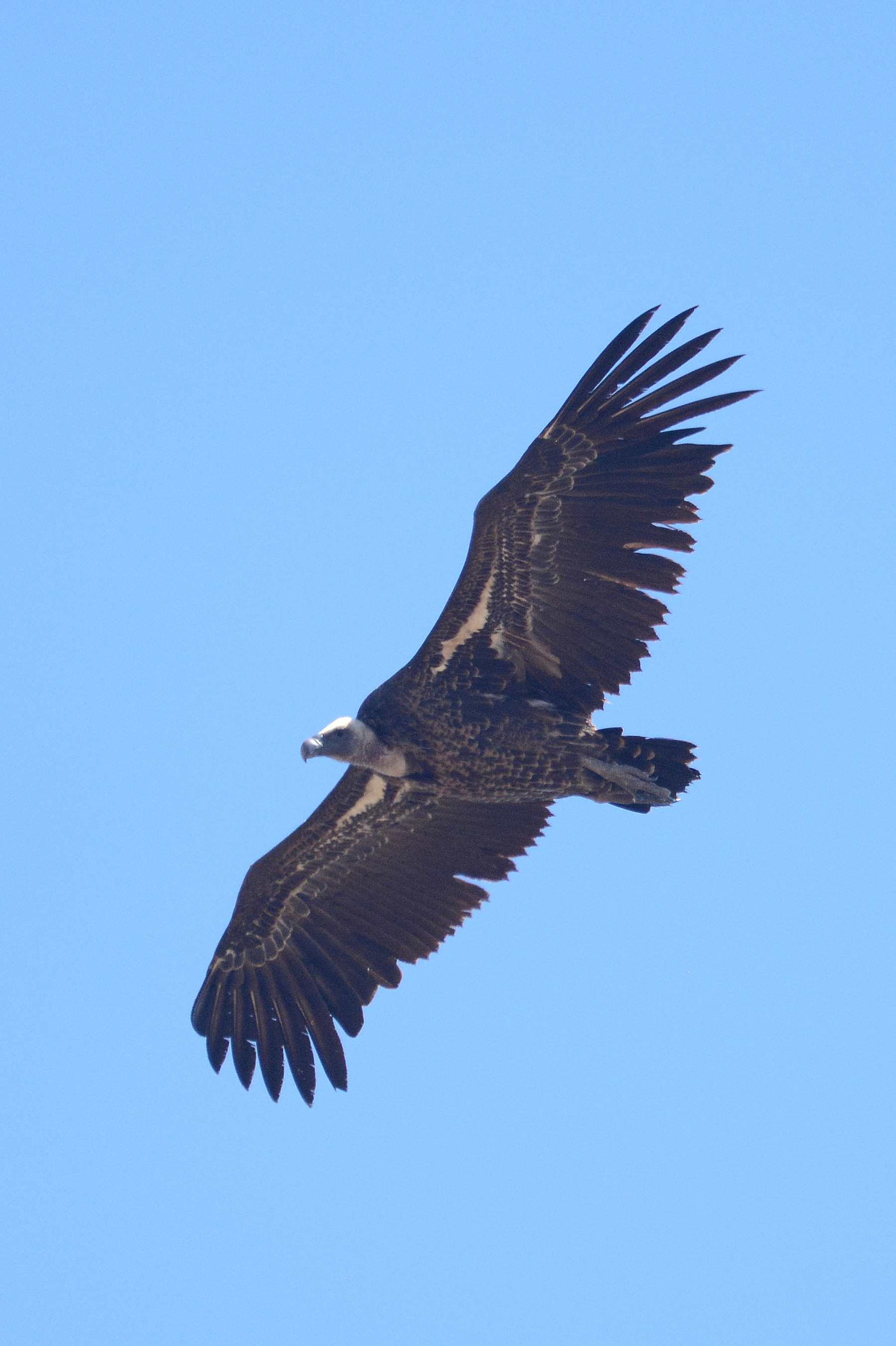Rüppells Gier
Gyps rueppelli · Rüppell's Vulture
 Rüppells Gier ·
Gyps rueppelli
·
02-09-2021 · Arthur Geilvoet
Rüppells Gier ·
Gyps rueppelli
·
02-09-2021 · Arthur Geilvoet
| Datum | 2 september 2021 |
|---|---|
| Locatie | Tarifa, Spanje |
| Fotograaf |
|
| Bekeken | 6326 × |
Hoewel het wereldwijd ontzettend slecht gaat met deze soort, zit deze 'critically endangered' gier in Spanje juist in de lift. In de nazomer is de soort goed te doen op de bekende roofvogeltelposten nabij Tarifa. Nadat ik twee vogels tegelijk had gezien op 31 augustus, zag ik op 2 september in vier uur tijd maar liefst vijf keer een Rüppells Gier voorbij vliegen bij Cazalla. Ongetwijfeld een paar keer dezelfde vogel, maar er hangen verschillende vogels rond in het gebied. Deze kwam wel heel mooi over. Verder was het hier excellent vertoeven met enorme roofvogeltrek, voornamelijk van Wespendief, Zwarte Wouw, Dwergarend en Slangenarend. |
Discussie
Max Berlijn
·
4 september 2021 17:27, gewijzigd 5 september 2021 22:49
Heel gaaf Arthur, in Senegal in Januari 2006 vonden we, behoudens een grote groep (100 samen met Vale Gieren) bij drie doodgereden Ezels, de soort nauwelijks.
Eduard Sangster
·
4 september 2021 21:24
Goed gedaan, mooie soort, zeker in de WP.
Ed van Boheemen
·
5 september 2021 22:05
Netjes!!
Max Berlijn
·
15 oktober 2021 15:16
Toch ook steeds vaker in het WP theater..
Diedert Koppenol
·
15 oktober 2021 16:17, gewijzigd 15 oktober 2021 16:20
Toch blijft Witruggier, in tegenstelling tot Rüppels die zo langzamerhand jaarlijks wordt, wel echt een flinke knaller in Europa, zou voor zover ik weet het 11de geval zijn indien aanvaard.
Max Berlijn
·
14 november 2021 08:49
En weer een (of dezelfde?).
Edwin Russer
·
26 november 2023 10:59
Afgelopen donderdag een vogel in ItaIië.
George Sangster
·
27 juni 2024 12:41
Onrubia, A, Torralvo, C, Morandini, V & Ferrer, M 2024. Rüppell’s Vulture (Gyps rueppelli): a new vulture species for Europe? Journal of Ornithology 165: 747–757.
The Rüppell's Vulture, formerly restricted to a strictly African distribution, has recently been classified as a Critically Endangered species worldwide. However, in recent decades, observations of the species in Europe, particularly in the south of Spain, have been on the rise. In this study, we conduct a diagnosis of the situation of this species in southern Europe through the analysis of the Sahel Precipitation Index (SPI) and Griffon Vulture autumn migration counts as quantitative measures, with the aim of identifying possible drivers of these changes and population trends. The analyses demonstrated that a number of Griffon Vultures during autumn passage through the Strait of Gibraltar, together with Sahel precipitation anomalies from the previous year, are the best predictors of the number of Rüppell's Vultures during autumn passage through the same strait in the following year, explaining 68.7% of the variance. The proportion of Griffon Vultures in the Sahel has markedly increased as populations of other vultures have declined. Under these circumstances, it seems more than likely that Rüppell's Vultures would be prone to moving to Europe, following Griffon Vultures. This effect has also been favored by increases in number of raining days and floods in the Sahel due to climate change, which can lead to escapes of Rüppell's Vultures outside their usual ranges. Under these circumstances, it appears likely that the Rüppell's Vulture will soon become a new species among European vultures.
Gebruikers van het forum gaan akkoord met de forumregels.
